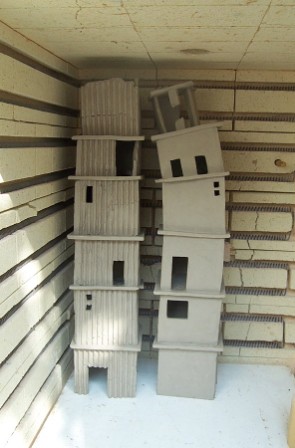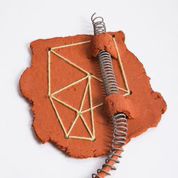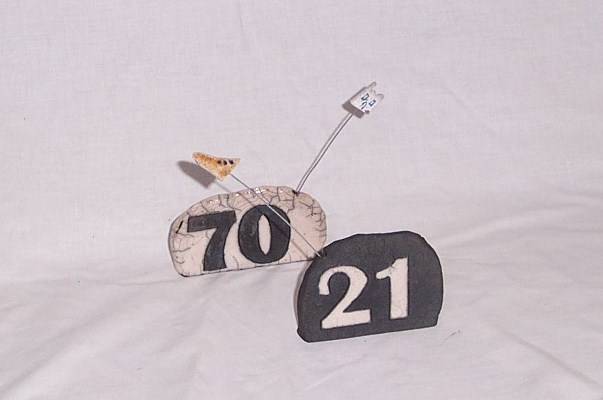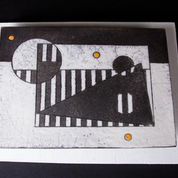My work is mainly handbuilt. Many pieces start from rolled out slabs of clay cut from a template and assembled with other cut pieces to form a three dimensional form. Patterning may be applied by pressing a pattern into the clay or incising with a wooden tool - whatever is appropriate.
The clay I use depends on the end product I am making. Most contain grog (pre-fired clay) to reduce shrinkage and distortion in drying.. Some are near white, but I also use a terracotta clay and a black stained clay. For work incorporating metal or pre-fired ceramics I use paperclay - the cellulose fibres added to the clay minimize shrinkage and risk of cracking.
All work is biscuit fired. Glazes and oxides are then applied to all or part of the surface. Most larger pieces are then fired to 1190 degrees. Many smaller pieces and some plaques are raku fired. Ware is taken out of the kiln red hot at about 1050 degrees and covered in sawdust. The end result is black from the carbon on unglazed areas and the glazed areas form cracks which take in carbon.
Sculptural pieces may incorporate other materials or be placed on plinths of wood or slate.egard myself as dbuilding clays rolled out as slabs, cut and assembled, then perhaps model



Above: Raku fired pieces.
Left: Awaiting biscuit firing .
Below Left: Mixed media - 'Element'
Below Right: Abstract Wall Hanging.

I regard myself as a sculptor making work to fit into a domestic setting (but with aspirations to produce work on a grander scale). My inspirations are eclectic and include the jigsaw form, architecture, metal cans from the first half of the 20th century, abstract sculpture, and furniture. I work mainly with grogged handbuilding clays rolled out as slabs, cut and assembled, then perhaps modelled and patterned or textured. Most work is fired to stoneware temperature in a wood-fired kiln for the ‘warm’ finish caused by the fly ash. My usual glaze is a white dolomite glaze which is slightly under-fired so not smooth or glassy. Often cobalt is applied to give blue patterning. Sometimes the ‘raku’ firing technique - low temperature firing, removal red hot, then placed in combustible material to blacken unglazed areas – is utilised. Sculptural pieces may be on wooden or slate plinths and incorporate wire, textile or other materials.